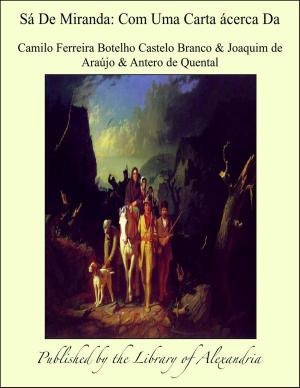| Author: | Sister Nivedita | ISBN: | 9781465615428 |
| Publisher: | Library of Alexandria | Publication: | March 8, 2015 |
| Imprint: | Language: | English |
| Author: | Sister Nivedita |
| ISBN: | 9781465615428 |
| Publisher: | Library of Alexandria |
| Publication: | March 8, 2015 |
| Imprint: | |
| Language: | English |
It is so with that symbolism which we know as language. The simple daily needs of mankind, seem, the world over, to be one. We look, therefore, for words that correspond in every land. Yet we know how the tongue of each people expresses some one group of ideas with especial clearness, and ignores others altogether. Never do we find an identical strength and weakness repeated: and always if we go deep enough, we can discover in the circumstances and habits of a country, a cause for its specific difference of thought or of expression. In the North we speak of a certain hour as "twilight," implying a space of time between the day and night. In India, the same moments receive the name of "time of union," since there is no period of half-light,—the hours of sun and darkness seeming to touch each other in a point. The illustration can be carried further. In the word gloaming lies for us a wealth of associations,—the throbbing of the falling dusk, the tenderness of home-coming, the last sleepy laughter of children. The same emotional note is struck in Indian languages by the expression at the hour of cowdust. How graphic is the difference! Yonder, beyond the grass, the cowgirl leads her cattle home to the village for the night. Their feet as they go strike the dust from the sunbaked path into a cloud behind them. The herd-girl herself looms large across the pasture—all things grow quickly dim, as if the air were filled with rising dust. That word cowdust, indeed, strikes a whole vein of expression peculiar to this Eastern land. Everything about the cow has been observed and loved and named. As much water as will lie in the hole once made by its hoof is a well known measure amongst the Aryan folk! It is unnecessary to argue further that while the facts of nature determine the main developments of speech, yet every language and group of languages differs from every other as the characters of individuals and of nations. Something of the same sort is true of religious symbols. Short of perfect realization, we must see the Eternal Light through a mask imposed by our own thought. To no two of us, probably, is the mask quite in the same place, and some reach, by their own growth, diverging points so distant from the common centre that they mark the extreme limits hitherto achieved of those great areas known as the Christian, or the Buddhist, or the this-that-or-the-other consciousness.
It is so with that symbolism which we know as language. The simple daily needs of mankind, seem, the world over, to be one. We look, therefore, for words that correspond in every land. Yet we know how the tongue of each people expresses some one group of ideas with especial clearness, and ignores others altogether. Never do we find an identical strength and weakness repeated: and always if we go deep enough, we can discover in the circumstances and habits of a country, a cause for its specific difference of thought or of expression. In the North we speak of a certain hour as "twilight," implying a space of time between the day and night. In India, the same moments receive the name of "time of union," since there is no period of half-light,—the hours of sun and darkness seeming to touch each other in a point. The illustration can be carried further. In the word gloaming lies for us a wealth of associations,—the throbbing of the falling dusk, the tenderness of home-coming, the last sleepy laughter of children. The same emotional note is struck in Indian languages by the expression at the hour of cowdust. How graphic is the difference! Yonder, beyond the grass, the cowgirl leads her cattle home to the village for the night. Their feet as they go strike the dust from the sunbaked path into a cloud behind them. The herd-girl herself looms large across the pasture—all things grow quickly dim, as if the air were filled with rising dust. That word cowdust, indeed, strikes a whole vein of expression peculiar to this Eastern land. Everything about the cow has been observed and loved and named. As much water as will lie in the hole once made by its hoof is a well known measure amongst the Aryan folk! It is unnecessary to argue further that while the facts of nature determine the main developments of speech, yet every language and group of languages differs from every other as the characters of individuals and of nations. Something of the same sort is true of religious symbols. Short of perfect realization, we must see the Eternal Light through a mask imposed by our own thought. To no two of us, probably, is the mask quite in the same place, and some reach, by their own growth, diverging points so distant from the common centre that they mark the extreme limits hitherto achieved of those great areas known as the Christian, or the Buddhist, or the this-that-or-the-other consciousness.















